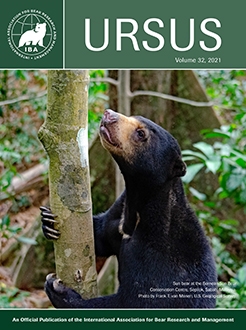Analyses of postrelease movements and behaviors may indicate the propensity of rehabilitated American black bears (Ursus americanus) to be involved in human–bear conflicts. We assessed various linear and Euclidean distances and constructed collar duration and seasonal home-range estimates using Dynamic Brownian Bridge Movement Models to determine whether 28 rehabilitated yearling bears released in North Carolina, USA, between 2015 and 2018 established a home range or remained transient. Male bears typically moved farther than females, and Mountain region bears typically moved farther than Coastal Plain region bears. All bears showed equally tortuous movement patterns across regions and sexes. Seven bears traveled greater distances than the average of all bears in this study and 2 bears did not establish a home range; these results indicate transient behavior. No bears exhibiting transient behavior were involved with human–bear conflicts, but the North Carolina Wildlife Resources Commission received calls concerning 4 resident bears, 2 of which exhibited behaviors that would potentially lead to human–bear conflicts. Knowledge of postrelease bear movements will inform management decisions by improving understanding of how movements may affect human–bear interactions.
How to translate text using browser tools
6 September 2021
Spatial analysis of rehabilitated American black bears to assess conflict potential
Mike N. Gillikin,
Rachael E. Urbanek,
Colleen Olfenbuttel,
Casey G. Dukes
ACCESS THE FULL ARTICLE

Ursus
Vol. 2021 • No. 32e15
January 2021
Vol. 2021 • No. 32e15
January 2021
American black bear
Dynamic Brownian Bridge
home range
movement
North Carolina
rehabilitation
residency




